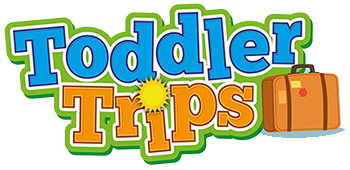Flying with a baby can be a daunting experience for new parents (and even experienced ones).
The truth is, travelling with a baby will never be the same as your pre-baby travel heydays. But there are various tips and tricks you can use for the flight to go as smoothly as possible — for you, your baby and the passengers around you.
As a parent of a one-year-old, you may be asking yourself: “How can I keep my 1-year-old entertained on a flight?“, “Will my baby cope on a long-haul flight?“, “Will they cry the whole way?” … All valid questions!
There’s no need to panic. With some preparation and planning, flying with your baby can be a fun adventure and even an easygoing experience.
These travel tips for flying with babies will ensure your first flight goes as smoothly as possible for both you and your baby. You might even hit the jackpot and get them to sleep throughout the journey!
- Booking and Other Preparations
- Navigating the Airport and Flying With Your Baby
- 7. Use a baby carrier
- 8. Always pack more baby gear than you think you will need
- 9. Dress in comfortable clothes
- 10. Don’t forget spare clothing for you and baby!
- 11. Know when to ask for help
- 12. Help their ears during take-off and landing
- 13. Keep your baby busy and entertained with quiet toys
- 14. Keep calm and do your best!
- Baby Flying FAQs
- Final Thoughts on Flying With A 1-Year-Old
Booking and Other Preparations
1. Check what ID is needed for your infant
While children under 16 years old do not require identification to travel within the UK, carrying your child’s birth certificate won’t hurt and will probably make the process quicker and smoother.
But if you and your little one are taking an international flight, then a passport is needed.
Leave plenty of time between your flight and getting your passport — a child’s first passport usually takes a bit longer than an adult renewal. Ideally, you won’t book your flight until you’ve received the passport.
2. Check if you can get priority boarding
Boarding a flight takes more time with a baby or child. Flying with a toddler or baby is already stressful enough, without having fellow travellers sigh as you struggle to make your way to your seats.
Should your airline offer it, take advantage of the priority boarding option. Priority boarding can help with the hassle of getting yourself and your little one on the plane and to your seats quickly before take-off.
Many airlines, including BA, will automatically offer you priority boarding if you’re travelling with an infant. Other airlines will charge you for the pleasure!
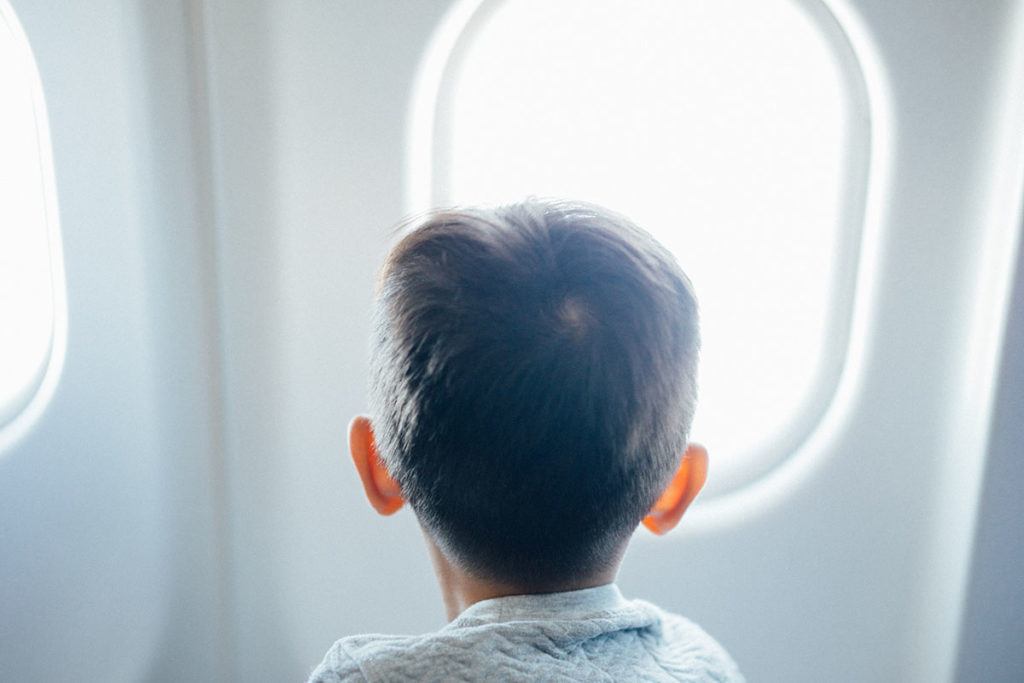
3. Consider booking a separate seat
You don’t need to book a seat for under-2s on planes but it can be difficult holding them on your lap the whole way — particularly if they’re at the wriggly stage!
An extra seat for your little one can do wonders for freeing up space while ensuring your baby is safe and comfortable — especially for long-haul flights. Of course, this will add a significant expense to your flight costs and many would consider this over-kill.
If you don’t fancy booking an extra seat, an aisle seat is the next best option so you can easily get up and down without disturbing anyone else around you. We know we’re not the only ones who have spent hours on a flight ‘walking’ up and down the aisle with our cruising pre-walker! It’s a good way to tire them out if nothing else!
Some parents like to book seats closer to the back of the plane, making it easier for you to board, make your way to the toilet, and disembark. Personally, we find the turbulence to be worse at the back so tend to go for more forward seats. Whatever works for you!
4. Consider bringing your own car seat or bassinet
If you’ve booked your baby their own seat, it may be worth bringing a travel car seat or an aeroplane bassinet to make the flight more comfortable for them.
Providing your baby with comfort and a place to fall asleep is a must on a long-haul flight. It also gives you the relief that you won’t have to hold your little one for the entire flight. And there’s the added bonus of having your car-seat with you in your destination country.
Find out with your airline if you’re allowed to bring your own car seat or bassinet on board, as some airlines may require it to be stored away. Some may even offer their own bassinets for your use.
5. Consider an overnight flight
The key to booking flights is knowing your baby’s schedule. An afternoon flight is a good option for shorter journeys if your baby’s nap time is after lunch.
For a long flight, consider booking an overnight flight. This way, your baby will know it’s bedtime and you won’t have to spend half as much time entertaining the little one.
6. Check in online
Why stand in a long queue to check in at the airport? You already need to look after your little one and the mountain of luggage you’re taking.
Nowadays, many airlines offer online check-in or automated self-check-in kiosks for you to use. This time saving option can help you avoid any potential tantrums and stress, so take advantage of it!
Navigating the Airport and Flying With Your Baby
7. Use a baby carrier
Getting through airports can be a pain, especially when you have to look after your little one at the same time. Consider using a baby carrier for checking in and waiting around for your flight.
A major benefit of using one is you’ll be hands-free, making your commute around the airport much easier, all while your baby is safe and secure.
We’ve actually used a baby carrier on the plane as well, after take-off, as our little ones both liked to sleep in them.
8. Always pack more baby gear than you think you will need
The last thing you want to deal with is a hungry, dirty-nappied baby while flying. You can never go wrong with packing extras!
Whether you’re on a short or long flight, pack twice as much baby food, bottles, pumped breast milk, nappies, baby blankets, baby formula, and snacks as you think you might need.
You never know if your flight will be delayed or longer than expected due to weather conditions. So, be prepared with plenty of baby necessities!
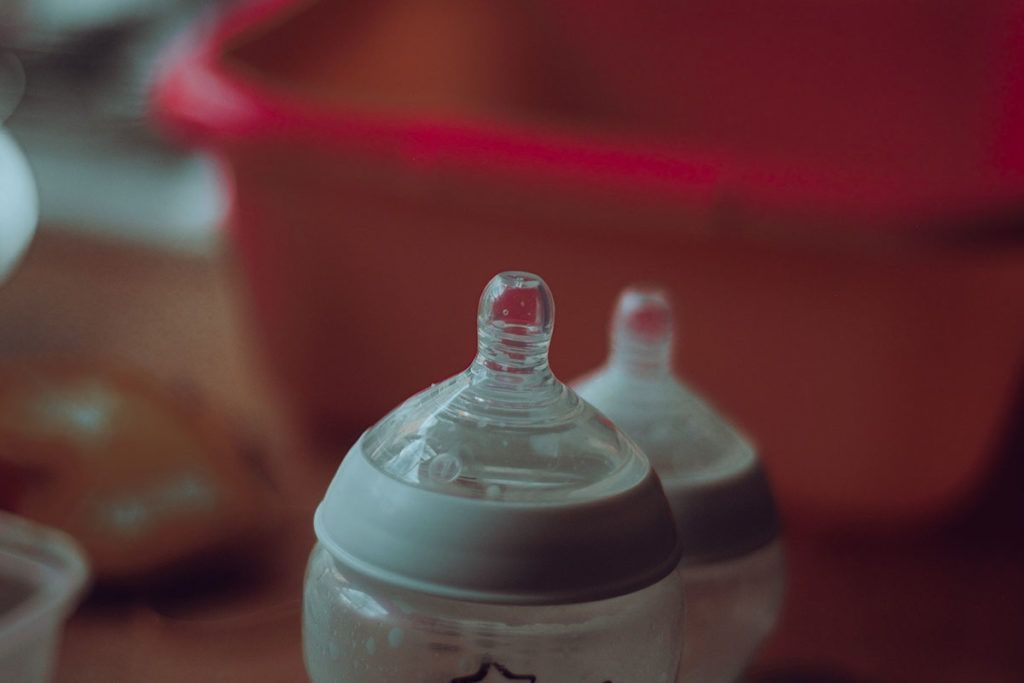
9. Dress in comfortable clothes
Rule number one of flying, especially with a baby, is to dress comfortably. Flights aren’t the most comfortable, and if you and your baby are in impractical clothing, it can make the trip ten times harder.
Like you, a cold or hot baby can become fussy and irritable. So to avoid your little one throwing a wobbly, dress them in layers that you can slowly take off.
Moreover, if you’re breastfeeding, you’ll definitely want to dress extra comfortably.
10. Don’t forget spare clothing for you and baby!
If you’ve been a parent for more than a few days, you’ll know exactly why you need to pack a spare set of clothing for you and your little one.
Whether you’re in for a long or short flight, always pack an extra set of clothing for you and your baby to avoid the inconvenience of any unfortunate accidents or sickness mid-flight.
There seems to be some sort of mysterious connection between the altitude when you’re flying and baby’s bowel movements. That’s all we’re saying… 💩
11. Know when to ask for help
Always remember that should you need help on your flight, it’s there for you! This is especially true if you’re flying solo but flight attendants and even some other passengers may be able to assist if both you and your partner need an extra set of hands for whatever reason.
12. Help their ears during take-off and landing
One of the number causes of a baby crying during a flight is the popping in their ears from the change in air pressure. Sucking, feeding, or chewing helps relieve the pain and popping in their ears.
Plan feedings for take-off and landing. You can give your baby a dummy or bottle to help ease pain and prevent any crying.
13. Keep your baby busy and entertained with quiet toys
For new parents, the days of enjoying a good book or movie while on a flight are gone. Most of your time spent flying will be entertaining and caring for your baby. So always be prepared with the necessary tools for this task: toys!
The key to finding the best travel toys for babies is to stick with quiet, compact, and lightweight playthings that will bring the most joy.
To make sure you’re well-prepared to keep your little ones occupied, here are some of the best toys and distractions to bring on board:
Soft book or Toys
Soft books or your child’s favourite furry friend are great toys for entertaining your little one during a flight. Soft books have fun interactive activities that are great for sensory stimulation, keeping them thoroughly occupied.
Teething Toys
Teething toys are a go-to for keeping your little one occupied and calm throughout a flight. They can also help with air pressure changes during take-off and landing.
Gadgets
Most 1-year olds are still a little young to watch programmes on a tablet but, if they’re tired enough, they may just relax with one. If your baby is a fan of certain TV shows or games, tablets and phones can be your best friends. A tablet with headphones will keep your little one entertained and quiet.
14. Keep calm and do your best!
Sometimes, no matter what you do, your baby will cry while flying. Just remember to stay calm! Caring for a baby is tough enough, and flying with them is no easy task. You’re doing your best, so ignore the eye rolls and sighing you may get from other passengers.
Just think about all the fun you’ll have with your little one when you land at your destination!
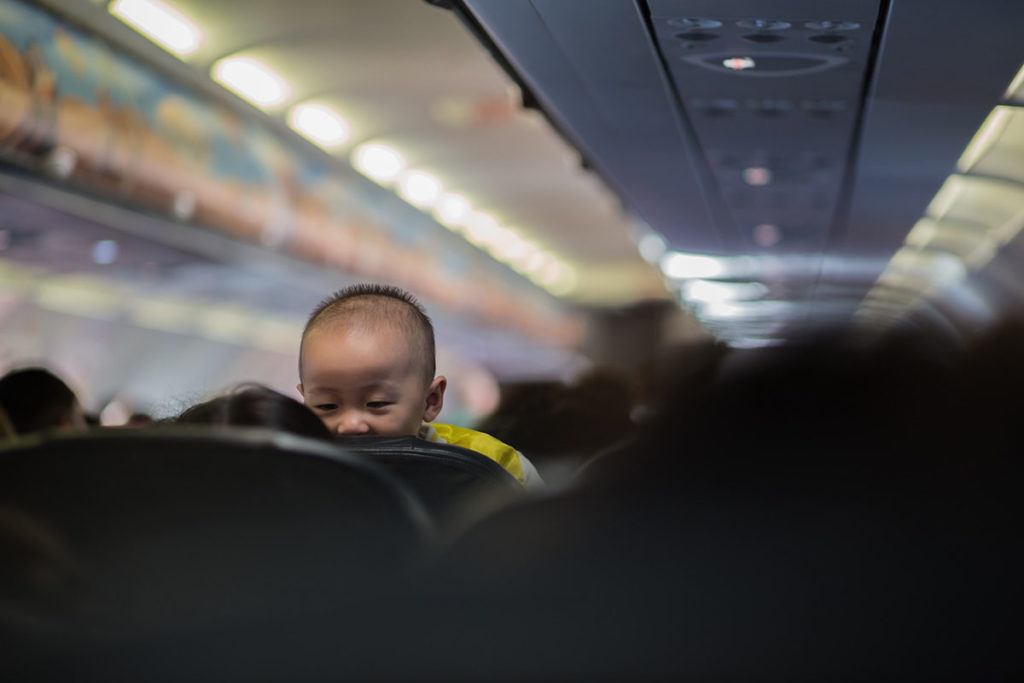
Baby Flying FAQs
If you are flying with slightly older kids, be sure to check out our companion guides:
How old does a baby have to be to fly?
The NHS generally advise that your baby be over two weeks old to fly, with some airlines insisting on the same. However, there are no standard regulations, so it’s best to always check with your airline before booking.
Some babies aged 2-7 days old can be permitted to fly, provided you have a fit-to-fly letter from your doctor.
Does a 1-year-old need a seat on a plane?
The requirement for a seat varies from airline to airline but most carriers in the UK allow under 2s to fly while sat on an adult’s lap. Always confirm with your airline on the requirements before booking.
Can you bring a car seat on a flight?
Most airlines allow you to take a car seat and pram in the hold for free. However, in many cases, car seats are only allowed on board if you’ve booked a separate plane seat for your infant and intend to secure the car seat into it.
To avoid being caught out by extra costs or restrictions, always check with your airline regarding their carry-on policies for car seats and prams before booking.
Do babies’ ears hurt when flying?
Noise levels and cabin pressure can affect your baby’s ears during a flight and cause them pain, particularly during take-off and landing.
A few ways to reduce this for your 1-year old include:
- Getting them to suck on something — a dummy, bottle or a breast if still breastfeeding
- Snacks
- Distraction — try them with headphones and their favourite show on a tablet or phone
Does a nappy bag count as a carry-on?
In some cases, airlines will allow some extra carry-on baggage if you’re travelling with babies. This allowance may include a nappy bag, but it’s always worth finding out beforehand.
Rules and regulations may vary by airline and whether you travel domestically or internationally.
So before you book, check your airline’s policy details closely. Moreover, if you buy a seat for your baby rather than have them sit on your lap, the seat will automatically come with its own baggage allowance.
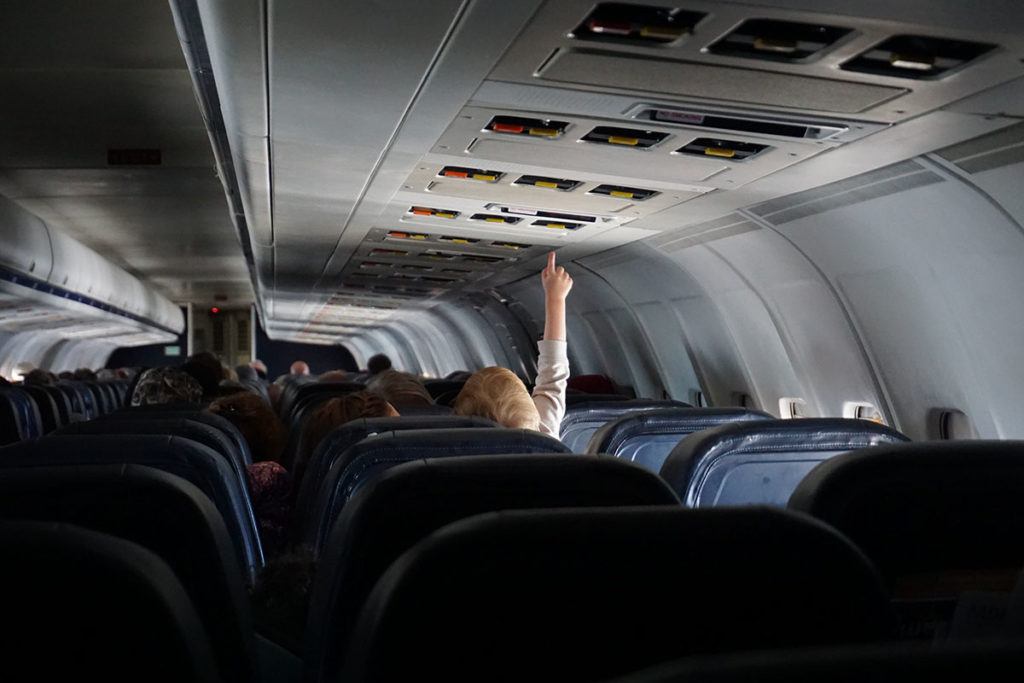
Final Thoughts on Flying With A 1-Year-Old
With good preparation and planning in place, managing your little one on a plane is not as terrible and intimidating as it may seem!
From take-off to landing, focus on your baby and make them as comfortable as possible. There are many family-friendly airlines that are primed and ready to make the experience enjoyable for you and your little one.
While flying with a 1-year-old can be tough and require a lot of your energy, it’s well worth it in the end. And remember, you’re probably not alone! Another fellow parent may be on board with their little one, who equally understands your efforts.
